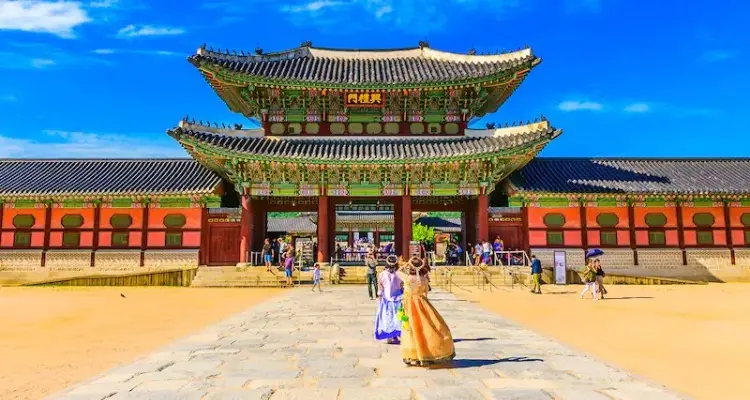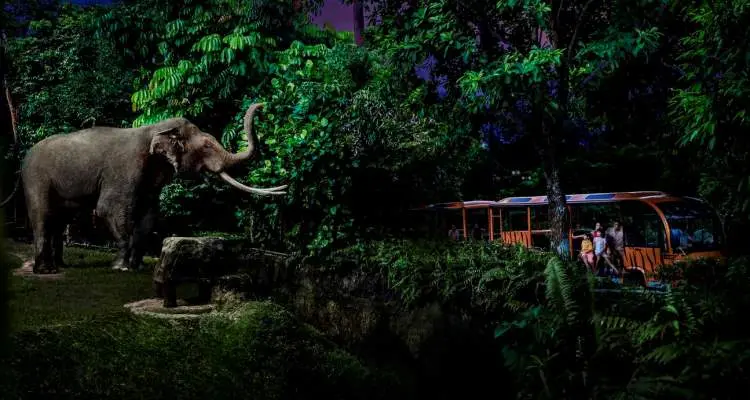Gyeongbokgung Palace: A Majestic Journey into Korean History

Gyeongbokgung Palace, often referred to as the “Palace Greatly Blessed by Heaven,” is an iconic cultural gem nestled in the heart of Seoul, South Korea. With its rich historical significance, architectural grandeur, and captivating surroundings, Gyeongbokgung Palace stands as a must-visit destination for both locals and tourists alike.
In this article, we will delve into the reasons why you should consider visiting Gyeongbokgung Palace, its location and route, the best time to plan your visit, and the enchanting sights that await you within its sprawling grounds.
Why Visit Gyeongbokgung Palace?
1. Historical Significance
Gyeongbokgung Palace represents the epitome of Korean history, as it served as the main royal palace during the Joseon Dynasty. Built in 1395, it has witnessed numerous political and cultural milestones throughout the centuries. By exploring the palace, you can immerse yourself in the rich heritage of Korea and gain a deeper understanding of its royal traditions and customs.
2. Architectural Grandeur
The palace’s awe-inspiring architecture showcases the artistry and skill of the craftsmen of the Joseon Dynasty. From the grand gateways to the intricate detailing of the buildings, Gyeongbokgung Palace exudes a sense of grandeur and elegance that is sure to leave visitors in awe.
The meticulous restoration work conducted over the years has preserved the palace’s original beauty, allowing visitors to experience the grandeur of ancient Korean architecture firsthand.
3. Cultural Exploration
Visiting Gyeongbokgung Palace offers a unique opportunity to delve into Korean culture and traditions. The palace complex houses the National Palace Museum of Korea, which showcases an extensive collection of artifacts and artworks from the Joseon Dynasty.
Additionally, you can witness the Changing of the Guard Ceremony, a colorful spectacle that reenacts the ancient royal guards’ changing shifts.
Location and Route
Gyeongbokgung Palace is situated in the heart of Seoul, South Korea. Its exact address is 161 Sajik-ro, Jongno-gu, Seoul. The palace is easily accessible via public transportation, with several subway stations located nearby, including Gyeongbokgung Station (Line 3) and Anguk Station (Line 3).
Once you arrive at the palace, the recommended route begins at the main gate, Gwanghwamun, where you can witness the grandeur of the changing of the guard ceremony. From there, follow the central path, passing by the Geunjeongjeon Hall, where the king conducted official business and held important ceremonies.
Explore the side buildings, such as the Gyeonghoeru Pavilion, which served as a banquet hall, and the Jagyeongjeon Hall, where the queen resided. Finally, make your way to the tranquil gardens at the rear of the palace, which provide a serene escape from the bustling city.
When to Visit
To fully appreciate the beauty of Gyeongbokgung Palace, it is advisable to plan your visit during pleasant weather conditions. The palace is open year-round, except for Tuesdays. Spring (April to June) and autumn (September to November) are especially recommended, as the cherry blossoms and vibrant foliage provide a breathtaking backdrop to the palace’s already stunning architecture.
It is also worth noting that Gyeongbokgung Palace offers a unique experience during the evening hours. The palace hosts special nighttime events, allowing visitors to witness the palace illuminated by enchanting lights, creating a magical ambiance.
What to See at Gyeongbokgung Palace
- Gwanghwamun Gate: The main entrance to the palace, featuring the changing of the guard ceremony.
- Geunjeongjeon Hall: The throne hall where the king carried out official duties and received foreign envoys.
- Gyeonghoeru Pavilion: A picturesque pavilion set on an artificial island, used for royal banquets and celebrations.
- Jagyeongjeon Hall: The queen’s residence, showcasing intricate decorations and beautiful murals.
- National Palace Museum of Korea: A treasure trove of artifacts and artworks, providing insights into Korea’s royal heritage.
- Hyangwonjeong Pavilion: A small pavilion overlooking a serene pond, offering a peaceful atmosphere and picturesque views.
- Royal Guard Changing Ceremony: A vibrant reenactment of the traditional guard-changing ritual, taking place multiple times daily.
Conclusion
A visit to Gyeongbokgung Palace offers an unforgettable journey into the rich tapestry of Korean history and culture. From its historical significance and architectural grandeur to the opportunity to immerse oneself in Korean traditions, the palace provides an immersive experience like no other. Whether you’re captivated by its intricate architecture, curious about the lives of Korean royals, or simply seeking a tranquil escape in the heart of Seoul, Gyeongbokgung Palace promises to leave you with lasting memories and a deep appreciation for Korea’s vibrant past.


